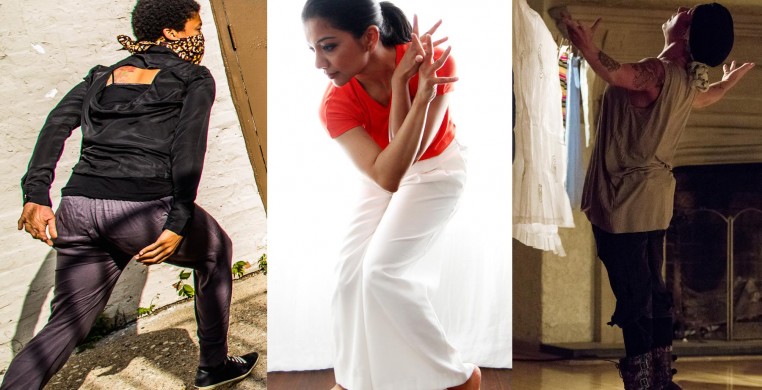This week, more than others, has been paralyzing. I’ve felt an all-consuming draw to imprint the Kavanaugh hearings and the actions of the Senate Judiciary Committee, knowing this is a week we will think about and talk about for decades. It’s hard right now not to see dance as a distraction from this decisive moment in our country, or feel unjustified in taking the time to reflect on something other than looming questions about the nature of partisan politics and their corrosive effect on American idealism. I feel jaded and stuck, lacking confidence in a system that’s revered by the world as fair, and designed to keep corruption at bay. I’ve observed colleagues using current events to fuel their writing, perhaps less effectively than those who’ve spent their careers writing about politics. Artmakers, too, are negotiating an inherent need to respond that is natural and appropriate. But it’s hard to know when to let the world permeate your work, and when to stay in your lane, particularly when doing so gives the appearance of ignorance, or worse, ambivalence. This is in part what has kept me from promptly and adequately reflecting on The Long Arc, a split bill presented as part of Links Hall’s epic 40th anniversary season whose Sept. 23 edition featured developing works by Maya Odim and Anjal Chande. And it’s Chande’s solo, “This is How I Feel Today,” which beautifully navigates this gray space between the personal and the political, between the broad view and a narrow lens that we are arguably all negotiating this week, if not in general.
Chande, who is taking a brief respite from a Fulbright fellowship year in Berlin to spend a week at home in Chicago, uses voiceovers, live spoken word, music and dance – her gorgeous use of contemporary bharatanatyam, to be specific – to muddle through her present-day musings about identity, race, politics, and a personal connection to family, specifically a special relationship she had with her grandpa. This she relates to her identity as a classically trained bharatanatyam dancer, and the hierarchy of privilege surrounding the form, as accompanies the pursuit of many codified dance techniques.
Behind her on the back wall of Links’ white space is a morphing animation of dots, lines, and vibrant colors, created in real time by graphic designer David Ofori-Amoah. It is this aspect, they claim, that is what most deems “This is How I Feel Today” a work-in-progress, but it reads like a sporadic visual output of radio waves and white noise – like the distraction is “the thing.” During this chaotic week of important distractions, that made sense to me.
As Chande blends dance and text, much of which is an amalgam of personal and academic essays read from strips of fabric streaming from the waist of her bright white trousers, she stops at intervals to craft an abstract maze with purple painter’s tape on the floor. A plain white mug, the only other prop she employs, is a real, tangible reminder of moments in which she sat still with her grandpa, drinking tea, reflecting on the world, as we were then.
Odim’s work, “Reach, Bury, Catch, Move, Hold” opened the long evening, a nearly hour-long, uneventful gaze at analog processes of making. Odim employs tools and techniques long forgotten in many western settings used to produce yarn, paper, pottery and baskets. Apart from a single 8-count phrase (a drop swing, a bent over crawling of hands, a drop to the floor) repeated too many times and a brief episode of break dancing, Odim’s movements are task-based, occupational, unassuming. She crouches at each of the crafting stations scattered about the space, oscillating between them, multi-tasking her creations, wiping her hands with a cloth or adjusting her tools and supplies. The scene is made more interesting by knowing that her supplies are sourced hyper-locally. DJs Gregory Dalphond and Chris Johnson mixed music live on two turntables in the upstage space with us seated in rows facing each other; with the DJs we form three sides of a tight box where the break dancing happens. While Dalphond and Johnson pay close attention to Odim, as do we, their choices about what to spin don’t appear to be specifically influenced by what’s happening in the space. And while the two solo performances on this evening reflected a similar theme of task and memory, and demonstrate an admirable degree of restraint, Odim appears to ignore – perhaps consciously – her role in creating an experience for us. I don’t know why that would be, but maybe that’s the point. Because for at least a few hours on a Sunday, I got to think about something else for awhile.


